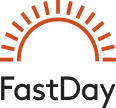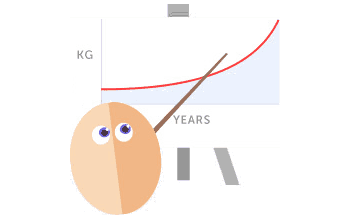I found some more interesting facts about
leptin in a Medscape review:
http://www.medscape.com/viewarticle/725342_1 (I think you have to register to see it, but registering is worthwhile as they have some good papers)
Points of interest:
Ghrelin and leptin, putative controllers of human appetite, have no effect on human meal-to-meal appetite but respond to variations in energy availability.
So fasting on one day does not necessarily result in increased appetite the next (as we have observed)
Nonhomeostatic characteristics of appetite and spontaneous activity stem from inhibition by leptin and ghrelin of brain reward circuit that is responsive to energy deficit, but refractory in obesity, and from the operation of a meal-timing circadian clock.
As PhilT discovered, in obesity
leptin is not working right.
A sustained inhibitory influence over feeding and a stimulatory influence over energy expending processes (presumed to include physical activity) are postulated to operate in the basal meal-to-meal state, under the influence of insulin and leptin. The inhibitory and stimulatory influences are hypothesized to be relaxed when body weight and fat, as well as plasma concentrations of insulin and leptin, decline to allow for restoration of the predeprivation fat level. A more detailed formulation of this homeostatic view is that the gut peptide ghrelin stimulates feeding in response to negative energy balance whereas meal size and energy balance are jointly regulated by the satiating gut hormones cholecystokinin, glucagon-like peptide 1, and peptide YY, and by the adiposity satiety hormones insulin and leptin.
As PhilT said, insulin and
leptin work together to control fatness and appetite, but there are further influences below this level.
Human and animal weights level off at vastly different plateaus depending on nonhomeostatic aspects of food presentation and availability or variable opportunities and necessity for physical activity.[27] Perhaps the strongest evidence contradicting the contemporary model of energy regulation is the absence of a dose-dependent increase in hormonal negative feedback on feeding and physical activity with increases in body fatness.[26] Instead, the effectiveness of leptin and insulin to suppress feeding and activate spontaneous physical activity progressively declines with increases in obesity.
However, as well as insulin and
leptin there are many other factors driving weight gain/loss and in obesity there is both insulin and
leptin resistance.
[in the authors' study]...hunger was insensitive to short-term fluctuations in energy availability caused by exercise or intravenous nutrient infusions. In addition, exercise suppressed hunger and increased perception of fullness (Fig. 2, left), corroborating similar reports by others[17] and demonstrating again the insensitivity of human appetite to exercise-induced short-term energy deficit.
So, for us, fasting does not result in an enormous appetite.
appetite and meal-to-meal eating seemed to be controlled by stomach capacity rather than by preceding energy deficit
As we have found, we feel full quickly after fasting, presumably due to a smaller stomach.
Much evidence overwhelmingly fails to support a homeostatic role of physical activity in energy regulation. There is a strong negative relationship between spontaneous physical activity and body fat in both animals and humans (Fig. 5). Obesity in rodents is invariably associated with profound hypoactivity whether induced by high-fat diet feeding,[27] lesions of medial basal hypothalamus,[16] or the absence or inactivation of leptin or its receptors.[22] Morbidly obese humans also are reported to be almost completely inactive.[32] Conversely, maintaining rats on restricted access to food leads to 300%-500% increases in spontaneous running as their weight loss increases. If the experiment is not terminated, rats virtually run themselves to death from energy depletion.[24] This animal model is paralleled by human anorexia nervosa, a condition of suppressed food intake, sustained weight loss, and high motivation for, and involvement in, physical activity.[6] Thus, the prevailing evidence indicates that spontaneous physical activity levels are related to body fat in an inverse and nonhomeostatic fashion.
This is seen in the increased energy levels reported by many people during fasting and which probably contribute to fat loss because this increase in NEAT is not taken account of in people's reporting of their activity levels.
Moderate exercise-associated leptin increases also are noticeable in our study (Fig. 3, right) and coincide with temporary suppression of hunger (Fig. 1). If more definitive support is found for the role of leptin in exercise-induced appetite suppression, this leptin action could serve as evidence for its role in functional linkage of meal eating and behavioral activation, and it could reveal a mechanism through which postmeal restraint over feeding contributes to a reduction in the weight plateau that is observed in exercising animals and humans.
This might contribute to the much greater weight loss seen in Krista Varady's study of ADF with exercise compared with no exercise.
Leptin and insulin also contribute to stability of body weight and body fat levels through their metabolic actions. Insulin resistance develops at high body fat levels and limits further nutrient storage and fat synthesis by blunting antilipolytic and lipogenic insulin actions. In this way, high basal plasma insulin concentrations contribute to maintenance of obese body fat levels. During food restriction and body weight losses, higher sensitivity of adipose and other peripheral tissues to insulin favors glycogen and lipid synthesis and drives the restoration of higher body fat levels.
Presumably this implies that eating high carb foods after a fast would be a bad thing?
The magnitude of a nocturnal rise in leptin concentration is proportional to the nutritional state at the onset of darkness. Nocturnal leptin concentration and presumably its lipolytic action[33] are greater in response to energy surplus and lower after energy depletion.[31] Dawn and dusk nadirs of human hunger (Fig. 6) may reflect circadian transition from higher nocturnal leptin concentrations when lipolysis is increased and behavioral activation blocked to the lower diurnal leptin concentrations when leptin may affect the motivation to locomote in conjunction with meal eating. When humans deliberately truncate the period of nocturnal rest, declines in plasma leptin and increases in plasma ghrelin are associated with increased appetite and presumably greater fat synthesis.[29] However, as levels of obesity rise and tissue resistance to leptin action increases,[26] nocturnal lipolytic effects of leptin would be expected to decline and tend to maintain higher body fat levels.
This gives a possible explanation for why obesity is linked with poor sleep. And it might also indicate that saving all ones calories for the evening meal on a fast day might result in more nocturnal lipolysis and so be slightly more effective than spreading ones calories?
The authors conclude:
Human feeding behavior is thus designed for nonhomeostatic meal-to-meal eating and is influenced by social forces that interfere with optimal operation of the energy regulatory mechanism. Environmental circumstances and the design of controls of eating behavior enhance the motivation for food seeking when energy deprived and after body fat loss but also encourage humans to overeat highly palatable and energy-rich foods when not energy deprived. This suppresses physical activity and engages the hedonic brain circuit, both of which contribute to excess fat synthesis and accumulation. Our currently inadequate understanding of the energy regulatory mechanism limits the opportunity to adjust conditions that would allow optimal operation of feeding behavior and physical activity for maintenance of healthy weight.





